Last updated: January 4, 2025
Have you ever been captivated by the sight of a Clydesdale? These majestic draft horses, with their towering stature, flowing feathered legs, and calm, gentle nature, inspire awe and admiration wherever they go. I still remember the first time I saw a team of Clydesdales leading a parade, their sheer power and synchronized movement leaving the crowd in awe.
As a lifelong horseman and author passionate about equine history and care, I’ve had the privilege of working with and learning from these iconic horses. This article combines personal experience and the latest research to provide a comprehensive guide to the Clydesdale horse breed, from their rich history to their unique traits and modern roles.
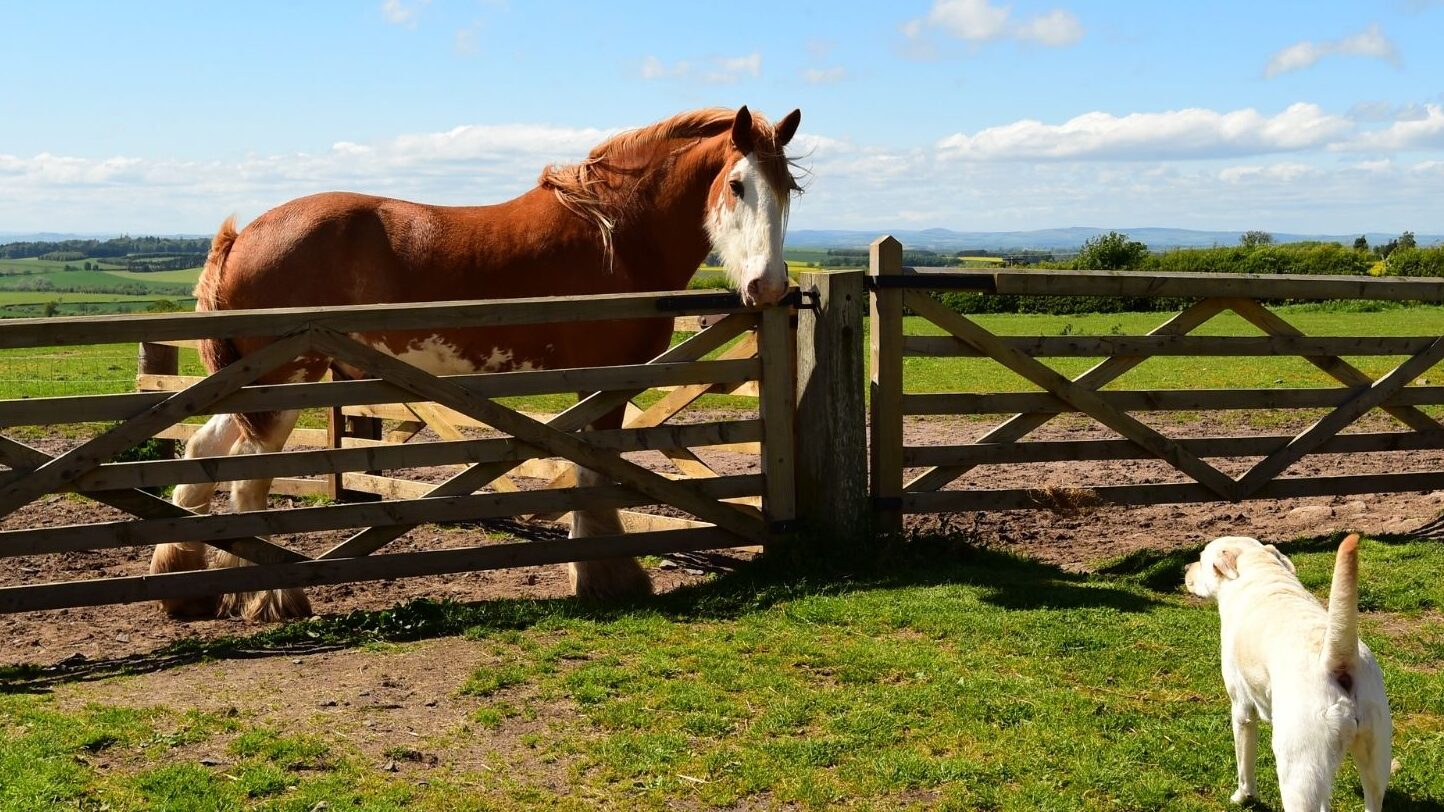
Clydesdale Horse Breed History: Origins, Growth, and Legacy
The Clydesdale breed originated in the Clyde Valley of Lanarkshire, Scotland, during the 18th century. These magnificent horses were bred to meet the growing demand for heavy farm and industrial work, becoming a cornerstone of Scottish agriculture.
- Development:
- Local mares were crossed with imported Flemish stallions to increase size and strength.
- Shire bloodlines were later introduced, refining their conformation and boosting their capacity for demanding tasks.
- Influential horses like Lampits Mare and Thompson’s Black Horse (Glancer) helped establish the breed’s physical traits and work ethic, ensuring their legacy as powerful draft horses.
- Purpose:
- Clydesdales were prized for their ability to plow rugged farmland and haul coal through busy city streets. In industrial areas, their strength was unmatched, and their endurance made them indispensable for transporting goods.
- Cultural Impact:
- As symbols of strength and reliability, Clydesdales became a source of national pride in Scotland. By the 19th century, they were exported worldwide, especially to North America, Australia, and New Zealand, where they adapted to new roles and climates. Their versatility and iconic appearance earned them international recognition.
- Decline and Revival:
- Mechanization during the 20th century, coupled with the population losses of two World Wars, caused a sharp decline in Clydesdale numbers. By the mid-1900s, the breed was at risk of extinction.
- Preservation efforts led by the Clydesdale Horse Society (established in 1877) and dedicated breeders have helped revitalize the breed, ensuring its continued presence in agriculture, shows, and parades (Clydesdale Horse Society).
Clydesdales are not just horses—they are living symbols of resilience, history, and cultural pride, embodying the enduring bond between humans and equines.
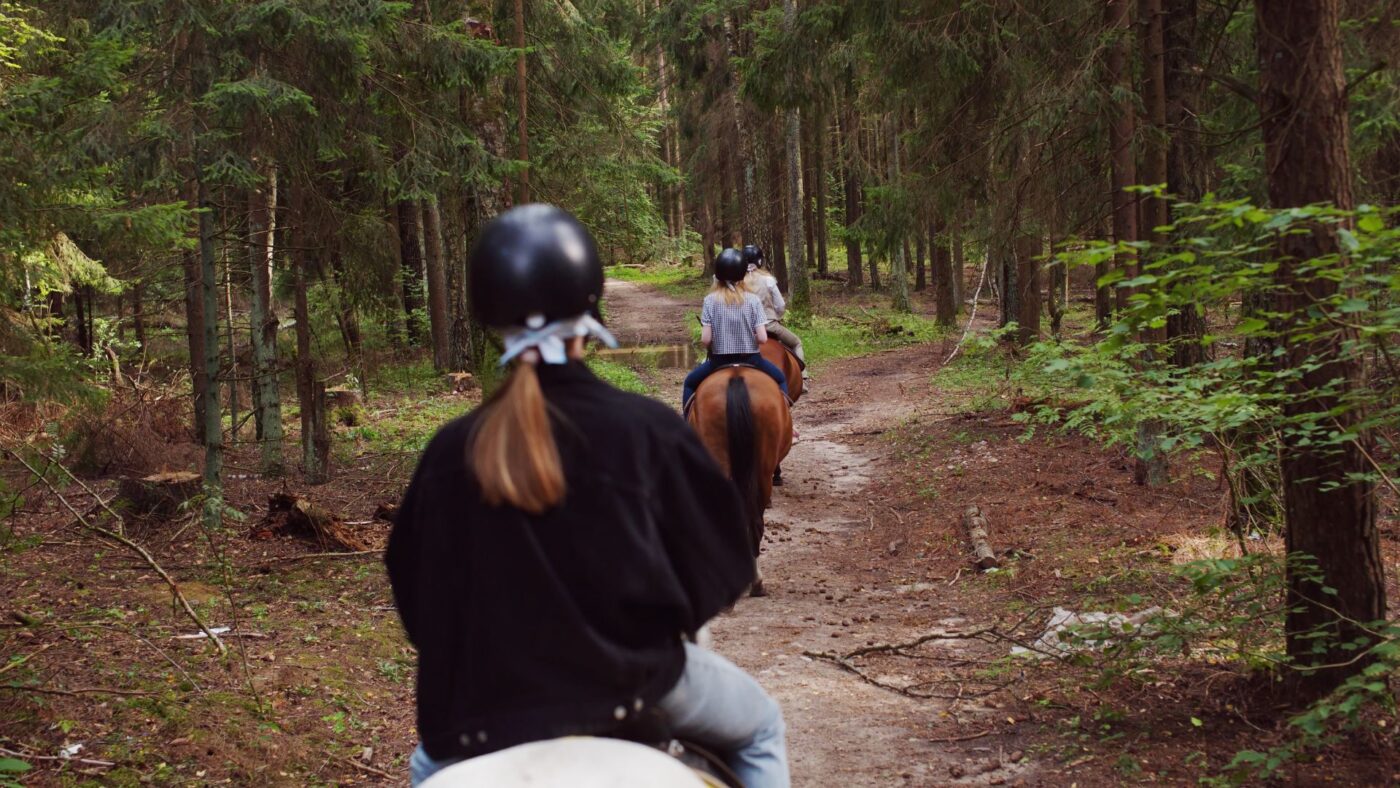
Clydesdale Horse Breed Characteristics: What Makes Them Unique
Clydesdales are renowned for their striking appearance and physical prowess, making them one of the most iconic draft breeds.
- Size and Build:
- Standing 16–18 hands tall (64–72 inches at the withers) and weighing 1,600–2,200 pounds, these horses are among the largest in the world. Some stallions can even exceed these ranges.
- Their broad shoulders, arched necks, and muscular backs make them ideal for heavy pulling, whether in agricultural fields or competitive pulling events.
- Compared to other draft breeds like Shires or Belgians, Clydesdales are slightly lighter but often taller, giving them a more refined yet powerful look.
- Distinctive Features:
- Feathering: Long, silky hair on their lower legs not only protects against harsh weather but also adds to their regal appearance.
- Hooves: Their large, sturdy hooves—sometimes weighing up to 5 pounds—are crucial for their work in pulling heavy loads. Regular hoof care is vital to prevent issues like cracks or laminitis.
- Facial Traits: A broad forehead, straight or slightly convex profile, and large, expressive eyes convey intelligence and a calm demeanor.
- Colors and Markings:
- Common coat colors include bay, black, brown, and chestnut, often accented by striking white markings on the face and legs.
- Roan coats, characterized by a mix of colored and white hairs, are also seen and add to their visual appeal.
- Movement:
- Known for their high-stepping, rhythmic gait, Clydesdales captivate audiences in parades and shows. This distinctive movement, combined with their size, makes them stand out in any arena.
Whether pulling a plow or leading a parade, Clydesdales’ physical characteristics reflect their blend of strength, elegance, and utility. Their iconic feathered legs and powerful build make them a breed apart, beloved by equestrians and spectators alike.
The Gentle Temperament of Clydesdale Horses: A Joy to Handle
Clydesdales are as gentle as they are grand, embodying a balance of calmness and intelligence that endears them to handlers and enthusiasts alike.
- General Nature:
- Despite their imposing size, Clydesdales are known for their calm, friendly, and easygoing demeanor. These qualities make them approachable even for novice handlers or those unfamiliar with large draft breeds. Watching a Clydesdale gently interact with children during a parade is a testament to their steady temperament and trustworthiness.
- Intelligence and Work Ethic:
- Quick learners with an eagerness to please, Clydesdales excel in both traditional roles, such as pulling heavy loads, and modern applications like therapeutic work or competitive driving. Their intelligence allows them to adapt quickly to new environments, making training a rewarding experience for handlers.
- Social Disposition:
- Clydesdales thrive in team environments, whether working alongside other horses in a pulling competition or grazing in a herd. Their friendly nature also extends to humans, forming strong bonds with their handlers. For instance, they often respond to subtle cues, showcasing their sensitivity and willingness to cooperate.
From their gentle interactions in parades to their teamwork in pulling events, Clydesdales’ temperament makes them a joy to work with, reflecting a breed as kind as it is majestic.
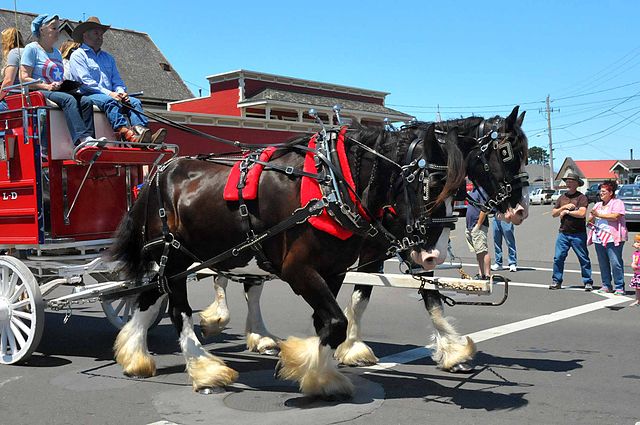
Caring for Clydesdale Horses: A Guide to Their Unique Needs
Caring for a Clydesdale is both a rewarding and unique experience, requiring attention to their specific needs due to their size and distinctive traits.
Diet and Nutrition
- High-quality forage is the cornerstone of their diet, with 25–50 pounds of hay daily providing essential fiber for digestive health.
- Grain supplements, ranging from 2–10 pounds daily, should be adjusted based on workload and activity level. For example, active Clydesdales working in parades or pulling competitions may require additional energy sources.
- Electrolytes are vital in hot climates or after strenuous exercise to prevent dehydration and support recovery.
(Learn more about feeding horses for optimal health.)
Housing
- Spacious stalls measuring at least 24×24 feet accommodate their size and provide comfort. Regular turnout in large grazing areas allows for exercise and mental stimulation.
- Clean, dry bedding reduces the risk of infections and keeps them comfortable. Pasture management, such as rotating grazing areas, prevents overgrazing and maintains pasture quality.
Grooming
- Feathering on their lower legs requires regular cleaning and drying to prevent skin conditions like scratches, a common issue in draft breeds.
- Pink-skinned areas, such as around the muzzle or blaze, are prone to sunburn and benefit from applying horse-safe sunblock.
- Brushing their thick coats daily not only keeps them clean but also fosters a bond between horse and handler.
(Explore detailed grooming routines for horses to keep your Clydesdale in top condition.)
Clydesdale Care Essentials Reference Table
| Care Aspect | Details |
|---|---|
| Diet | Requires more feed and hay, varies with workload |
| Stabling | Larger stalls needed (24×24 feet recommended) |
| Farrier Costs | Higher due to size; includes shoeing and trimming |
| Tack Requirements | Specialized larger tack necessary |
| Grooming | Regular, especially for feathers to prevent skin issues |
Caring for a Clydesdale requires dedication, but the rewards are immense. From grooming their flowing feathering to ensuring their health, the bond you build with these gentle giants makes every effort worthwhile.
Clydesdale Horse Health: Common Issues and Preventive Tips
Regular veterinary check-ups and farrier visits are essential for maintaining a Clydesdale’s overall health. Given their size and unique traits, these gentle giants are susceptible to specific health challenges:
- Hoof Care: Their large hooves bear significant weight and are prone to conditions like cracks and laminitis. Regular trimming, proper shoeing, and keeping hooves clean and dry can prevent many issues. (Read more about hoof care tips.)
- Chronic Progressive Lymphedema (CPL):
- Clydesdales face a significant risk of CPL, which causes swelling and lesions in the lower limbs. Research indicates there is currently no cure, but early intervention and consistent management can slow progression. (See details in this study.)
- Grooming and keeping feathering dry are critical steps in managing this condition.
- Degenerative Joint Disease:
- Heavy weight contributes to early onset of arthritis in older Clydesdales. Maintaining a healthy weight, providing low-impact exercise, and using joint supplements can help manage symptoms. (Supported by findings in this research.)
- Developmental Orthopedic Disorders:
- Young Clydesdales grow rapidly, increasing their risk for conditions like osteochondritis dissecans. Providing a balanced diet and avoiding overexertion during growth phases are essential preventive measures.
- Fertility Issues:
- Draft breeds like Clydesdales often have lower sperm concentrations, as noted in breeding studies. Dystocia (difficult births) is a mixed concern, and careful breeding management under veterinary guidance can address these challenges. (Refer to findings in this authority source.)
Monitoring your Clydesdale closely and addressing health concerns proactively ensures they remain healthy and active. A combination of preventative care, regular oversight, and expert veterinary guidance can greatly enhance their quality of life.
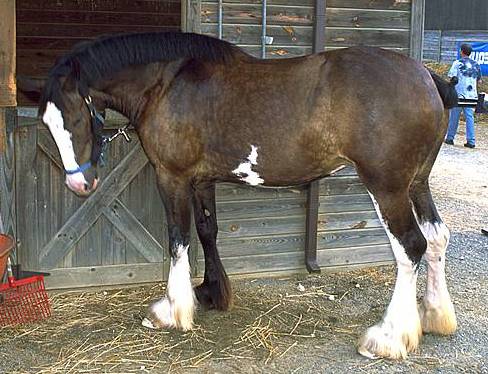
Training Clydesdales: From Traditional Roles to Modern Applications
Clydesdales are intelligent and adaptable, making their training a rewarding experience for handlers and owners alike. Their calm demeanor and eagerness to please allow them to excel in various roles, from traditional farmwork to modern therapeutic applications.
- Traditional Roles:
- Historically, Clydesdales were trained for plowing fields and hauling heavy loads in industrial and agricultural settings. Their strength and stamina made them invaluable for disciplined tasks that required precision and endurance.
- A well-trained team of Clydesdales working together to pull a wagon or plow is a sight to behold, showcasing their synchronicity and power.
- Modern Applications:
- Today, Clydesdales are trained for:
- Parades and Shows: Their high-stepping gait and majestic appearance make them crowd favorites.Recreational Riding: Despite their size, they offer a comfortable and steady ride, ideal for trail enthusiasts.Therapy Programs: Their calm temperament is particularly beneficial in therapeutic settings, where they interact with individuals of all ages and abilities.
- Today, Clydesdales are trained for:
- Tips for Handlers:
- Groundwork: Start with basic groundwork to build trust and communication. This foundation ensures that Clydesdales respond confidently to commands.
- Tack and Equipment: Use appropriately sized tack to ensure comfort and effectiveness. For instance, a properly fitted harness or saddle can prevent discomfort and enhance performance.
- Patience and consistency are key when working with these intelligent horses, as they thrive in structured environments with clear expectations.
Training a Clydesdale is not just about teaching them tasks—it’s about fostering a bond of trust and respect. Whether leading a parade or pulling a wagon, these gentle giants demonstrate their intelligence, adaptability, and willingness to please, making every effort worthwhile.
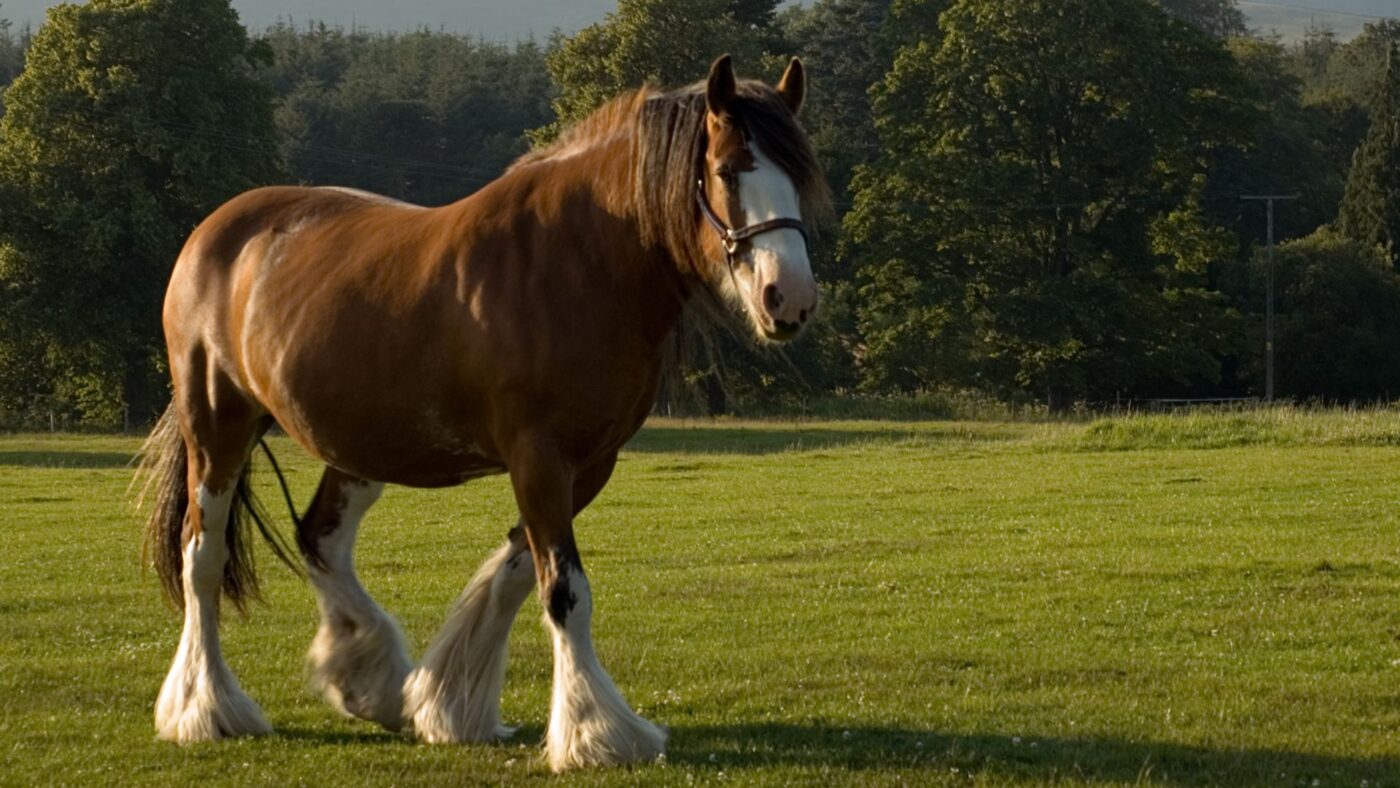
Modern Roles of the Clydesdale Horse: Parades, Therapy, and More
Clydesdales remain versatile and admired for their roles in modern society, showcasing their adaptability and timeless appeal:
- Parades and Shows: With their high-stepping gait and majestic appearance, Clydesdales captivate audiences at events like the Macy’s Thanksgiving Day Parade. Their synchronized movements and powerful presence make them a symbol of elegance and tradition.
- Therapy Programs: Their calm demeanor and friendly nature make them ideal for equine therapeutic settings. From assisting children with special needs to helping veterans manage PTSD, Clydesdales provide comfort and a sense of connection.
- Cultural Icons: The Budweiser Clydesdales are perhaps the most recognizable ambassadors of the breed, symbolizing strength and heritage in commercials and public appearances.
(Learn more about training large horse breeds for these roles.)
Saving the Clydesdale Horse Breed: Conservation and Rising Popularity
The Clydesdale is currently categorized as “threatened” by The Livestock Conservancy due to population declines. Conservation efforts are critical to ensuring the breed’s survival.
- Breeding Efforts:
- Programs focus on maintaining genetic diversity and increasing population numbers through careful breeding practices.
- Organizations like the Clydesdale Breeders of the USA play a pivotal role in educating the public and promoting the breed.
- Rising Popularity:
- Media campaigns and conservation initiatives have raised awareness about the Clydesdale, boosting its popularity and appreciation worldwide.
- Events featuring Clydesdales, like fairs and parades, help connect modern audiences to their legacy.
Supporting these efforts ensures that future generations can experience the majesty of the Clydesdale firsthand.
(Discover more about rare horse breeds and conservation efforts.)
Clydesdale Breed Insights
| Insight | Detail |
|---|---|
| Lifespan | Typically mid-20s, similar to lighter breeds |
| Historical Role | Bred for farm work and heavy pulling |
| Breed Comparison | Larger and thicker-bodied than Shires and Percherons |
| Population | Approximately 5,000 worldwide, once a threatened breed |
Check out this YouTube video featuring the first riding experience of a young Clydesdale horse.
Clydesdale Horse FAQs: Your Questions Answered
Are Clydesdales suitable for beginner riders?
Yes, their calm and gentle nature makes the Clydesdale horse breed suitable for beginner riders. However, their size requires some adjustments in handling and riding.
Which is stronger, a Clydesdale or a Belgian horse?
Belgian horses are generally considered stronger than Clydesdales. Known for their muscular build and compact size, Belgians are renowned for their exceptional strength, especially in draft and pulling competitions.
What is the lifespan of a Clydesdale?
Clydesdales horses typically live between 20 to 25 years, though this can vary based on care and health conditions.
Can Clydesdales be kept with other horse breeds?
Absolutely! Clydesdales are known for their friendly nature and can coexist peacefully with other horse breeds.
Unique Aspects of Clydesdales
| Aspect | Detail |
|---|---|
| Pulling Capacity | Can pull over 2,000 pounds; some up to 8,000 pounds |
| Water Consumption | Up to 30 gallons per day |
| Foal Growth | Rapid, requiring careful monitoring |
| Color Variations | Commonly bay with white markings; also black, grey, chestnut |
The Legacy of the Clydesdale Horse: Strength, Grace, and Heritage
The Clydesdale horse embodies the perfect blend of power, grace, and gentleness. From their Scottish roots to their modern roles in agriculture, parades, and therapy, these gentle giants continue to captivate and inspire.
As a lifelong horseman, I’ve seen firsthand the joy and connection these horses bring to people’s lives. By supporting conservation efforts and celebrating their legacy, we can ensure that future generations will have the privilege of witnessing and working with these extraordinary animals. Share your own Clydesdale stories or learn more about supporting the breed through organizations like the Clydesdale Horse Society.
Have you had an experience with a Clydesdale? Share your story in the comments or connect with us on social media. Explore related articles on Horse Racing Sense for more insights into the equine world.
Key Characteristics of Clydesdales
| Characteristic | Description |
|---|---|
| Trail Riding | Excellent for trail riding; calm and sure-footed |
| Recognition | Known for pulling Budweiser wagons in parades and commercials |
| Temperament | Calm, don’t spook easily, ideal for unpredictable trails |
| Gait | Smooth and comfortable, capable of maneuvering over rough terrain |
| Size Considerations | Height and width important for trail clearance and navigation |
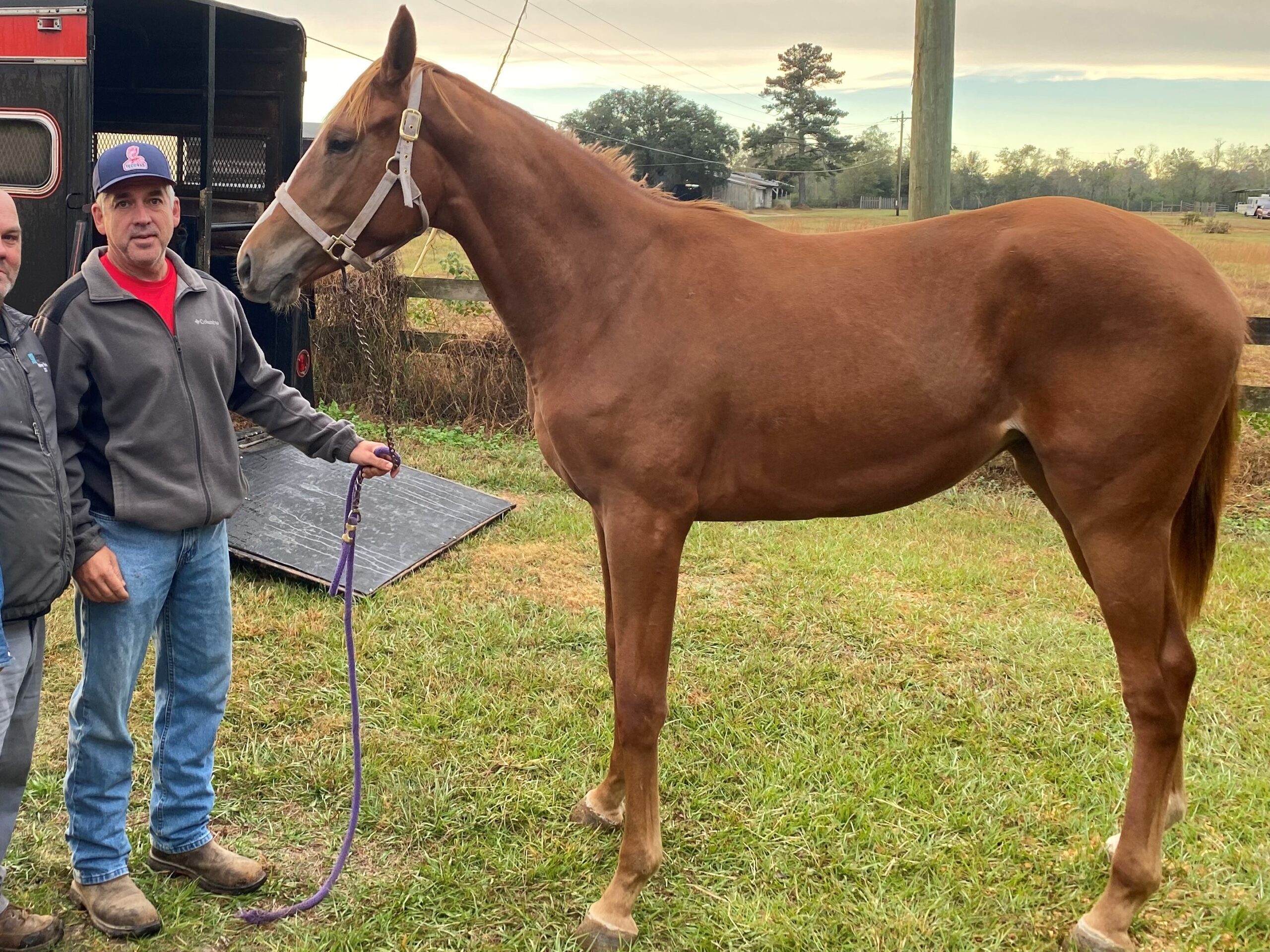
About the Author: Miles Henry
Lifelong Horseman | Racehorse Owner | Published Author
Miles Henry brings over 25 years of hands-on experience training and owning Thoroughbred racehorses. Raised with Quarter Horses and Appaloosas, he’s spent a lifetime learning from horses—on the track, in the barn, and in the field. Today, he runs a small but successful racing stable in Louisiana and shares real-world insights on HorseRacingSense.com, helping horse owners, fans, and bettors navigate the sport with confidence.
📚 Books: View Miles’s books on Amazon »
🎧 Podcast Guest: Animal Tales Ep. 32 |
YouTube Interview
📩 Newsletter: Sign up for racing tips and horse care advice »
🔗 Follow Miles:
Twitter |
Facebook |
YouTube


